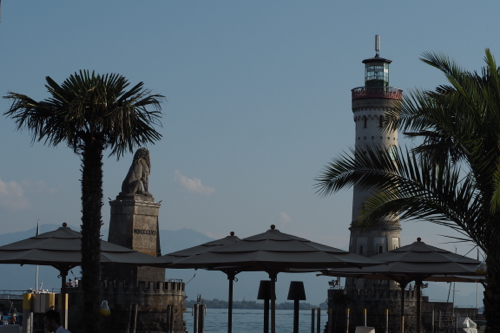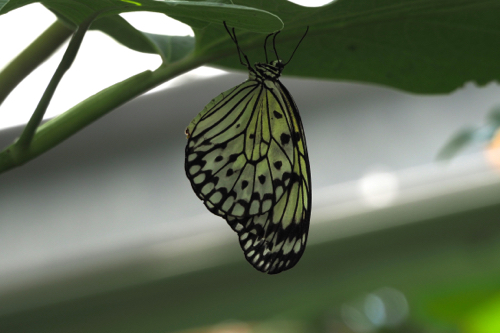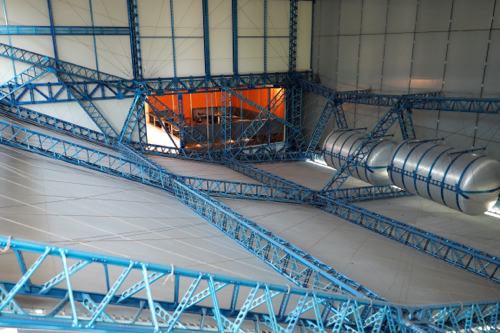August 26, 2019. Berlin to Lindau Island, Germany.
It was time for another side trip from Berlin, this time to Lindau Island on Lake Constance.
We caught the ICE (InterCity Express) from Berlin HBH to Lindau HBH. This took up most of the day but the ride was very comfortable and the train had good internet, so I could work.
Once we were on the island we met up with our Swiss/Australian friends Denis and Martine.
We were staying at the Hotel Garni Viktoria, which was on the edge of town but still very close to the centre. The hotel wasn’t open when we arrived, so much to Denis’s delight, there was time for a late lunch.
Lindau township is very close to the Austrian and Swiss borders and is on the 0.68 square kilometre (0.26 square mile) island of the same name. It is joined to the mainland by a road bridge and railway dam.
A feature of Lindau is the harbour entrance to the port, with its lighthouse and Bavarian Lion statue, both built in 1856.
Once we had checked into the hotel we went for a walk around the town. We then came across the Hundertwasser exhibition Dreamcatcher For A More Beautiful World at the recently opened Kunstmuseum at the Inselbahnhof.
Friedrich Hundertwasser (1928-2000) was an Austrian born New Zealand artist, architect, environmental activist and opponent of ‘a straight line’ in architecture. This use of biomorphic forms has led to him being compared to Antonio Gaudi (1852-1926) the famous Modernist architect from Catalonia, Spain and designer of Sagrada Família in Barcelona.
This was an exhibition of his painting and print making and his avoidance of the geometric was evident in the work on display.
August 27, 2019. Lindau and the Bodensee, Germany.
Lindau Island is connected to Lake Constance and the surrounding area by a network of ferries.
We decided that a day trip to Mainau would be a great way of seeing some of the lake and one of the most significant other islands.
We took the fast ferry to there so we would have enough time to explore. Even though the ferry was described as fast it still took nearly two hours to get there.
On the way we kept on seeing blimps in the sky over the lake. These came from town of Friedrichshafen, home of the famous Zeppelin.
A visit there was planned there for another day.
Mainau is described as a Garden Island and once you reach it you can see why. It’s geographical location gives the island a more Mediterranean climate than the surrounding country. This allows semi tropical plants to thrive in the more temperate conditions.
There are a number of historic buildings on the island but the main attractions are the gardens and the Arboretum. This garden of trees was created in 1856 by Grand Duke Frederich 1 and contains over 500 rare trees.
Mainau is administered by the Lennart Bernadotte Foundation and there are only about 200 people permanently living on the island.
To add to the tropical feel there is a greenhouse which also doubles a butterfly enclosure.
Wherever you walk on the island there are also great views of Lake Constance. It is certainly a big tourist attraction and we found ourselves jostling for vantage points to get good shots of the attractions.
One of the architectural highlights of Mainau is the Castle Church of St Marien. This Roman Catholic church was built in the Baroque style between 1732 and 1739. It is richly decorated with ceiling frescos and alter paintings by Franz Joseph Spiegler (1691-1757). There is also rich stucco work by Francesco Pozzi (1704-1789).
We took the slow ferry back to Lindau which added another half hour to the journey. A relaxing beer and wine in the salon of the ferry Konstanz and the time seemed to go past very quickly.
August 28, 2019. Lindau to Friedrichshafen, Germany.
It was the start of the new school year for the refugees in Arnex. This meant Martine had to return home to supervise the enrolments for her French classes. This left Denis, Thea and I to go to Friedrichshafen to visit the Zeppelin Museum.
This time we were on a train, which was a much faster journey than the previous day’s ferry. Admittedly Friedrichshafen is much closer to Lindau than Mainau.
The centrepiece of the Zeppelin Museum, the world’s largest aviation collection, is the reconstruction and history of the Hindenburg.
The partial reconstruction of the Hindenburg measures 33 metres in length and gives a good idea how this monster airship might have looked back in 1937. It is complete with a recreated lounge, that surprisingly features Modernist furniture.
The Hindenburg became a propaganda tool of the Third Reich, who totally rejected the work of the Bauhaus, a Modernist Design School that started in 1919.
The Hindenburg was designed and built by the Zeppelin Company in Friedrichshafen and operated by the German Zeppelin Airline Company. The commercial, passenger carrying, rigid airship flew from March 1936 until it was destroyed by fire, while attempting to land in New Jersey, USA, 14 months later in 1937.
Thirty six lives were lost in the fiery crash, with conspiracy theories abounding as to the cause. As there was a huge media presence at the landing site in Manchester Township, it became one of the most reported airship disasters. However the loss of life was considerably smaller than some of the preceding crashes. In 1923 the French Dixmude lost 52 lives. In 1930 the British R101 lost 48 and in 1933 the American Akron lost 73 lives.
Not the safest form of transport in the day.
Another feature of the exhibition was a beautifully restored Maybach Zeppelin. The Maybach Car Company was formed in 1909 by Wilhelm Maybach and his son and was a subsidiary of the Zeppelin Airship Company.
Apart from the airship museum there is a side gallery containing an important collection of art from South West Germany. Within that exhibition there was a special section that related to the ‘Nazi plunder’ of German art.
During World War II the agents of the Third Reich plundered art from all over Europe, much of it was taken from the Jewish population that either left Nazi Germany or were sent to the concentration camps.
This art is now being gradually recovered and the exhibition detailed the forensic analysis that is required to trace this art back the original owners. Many of the paintings were exhibited so you could see both sides, the art itself and the side that usually goes against the wall. This was done because the frames, canvas and shipping notes are a vital link to tracing the art’s origins and returning it to the original owners or their relatives.
After lunch by the lake in Friedrichshafen we returned to Lindau and spent the remainder of the afternoon wandering around the streets.
That was until the rain came.
There was an interesting portrait collection by Brigitta Loch in St Stephan Church. It was unusual to see art, other than the religious sort, featured in a church.
That night the three of us had dinner at a very German restaurant in a Bavarian pub. This was slightly out of the centre of town and we had to scramble back to the hotel, dodging the persistent rain.
August 29, 2019. Lindau to Berlin, Germany.
After breakfast at the hotel, which we all decided was excellent value, we wandered into town for a coffee and then parted ways.
Denis was on the ferry, heading back to Switzerland to join Martine and we were on the train returning to Berlin.
It was a long train ride, interspersed with torrential rain.
A soggy end to our second side-trip from Berlin.












